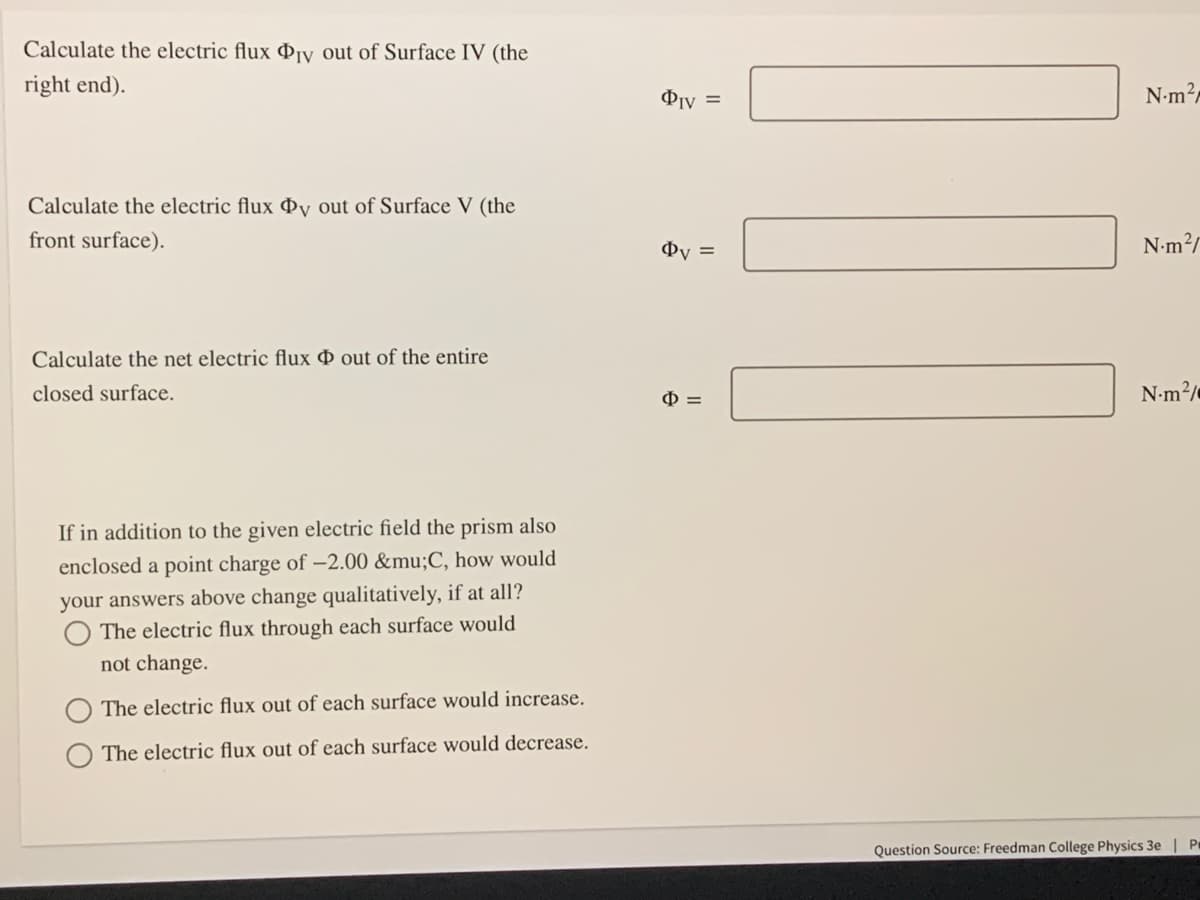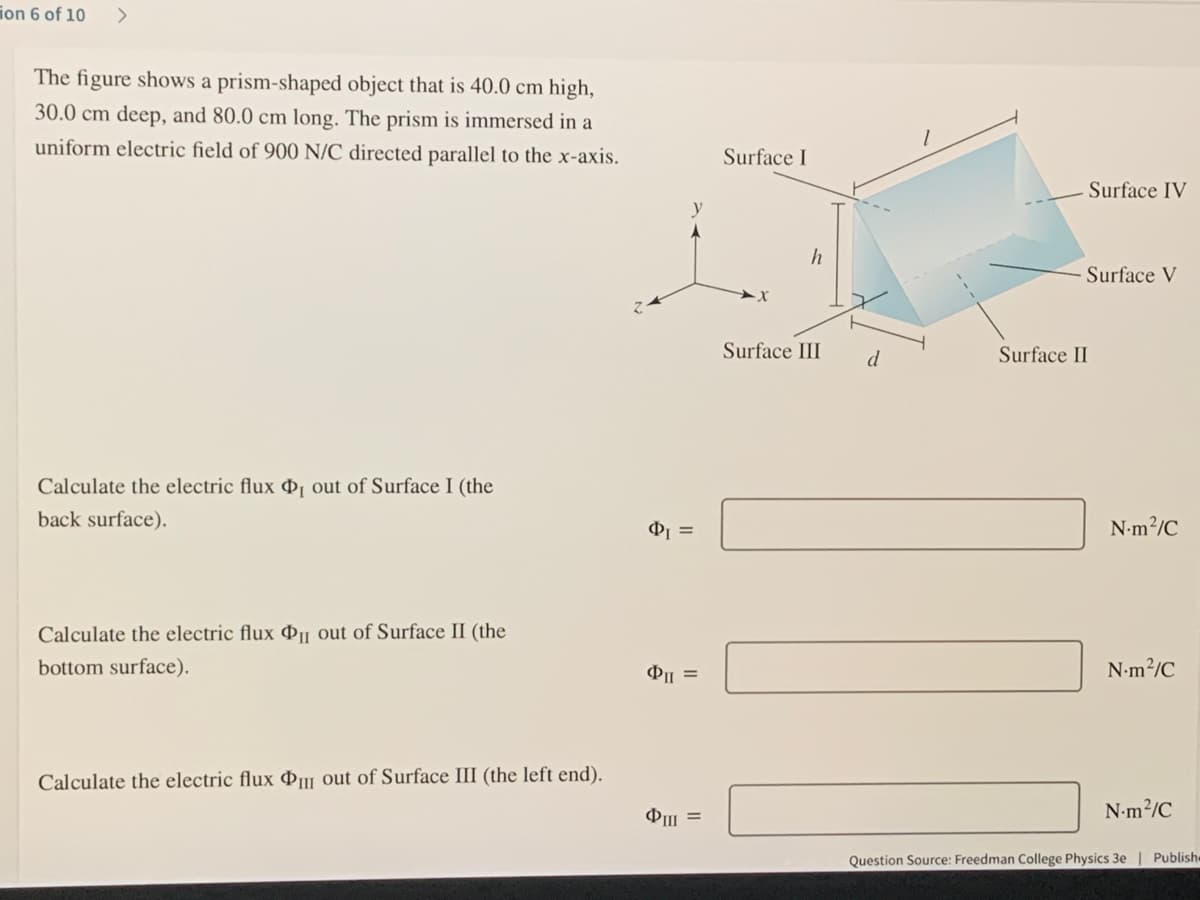out of Surface V (the Фу %3D
Related questions
Question
100%

Transcribed Image Text:Calculate the electric flux Þjy_out of Surface IV (the
right end).
Oiy =
N-m?
Calculate the electric flux Øy out of Surface V (the
front surface).
Oy =
N-m?/
Calculate the net electric flux Ô out of the entire
closed surface.
N-m2/
Ф-
If in addition to the given electric field the prism also
enclosed a point charge of –2.00 μC, how would
your answers above change qualitatively, if at all?
O The electric flux through each surface would
not change.
The electric flux out of each surface would increase.
O The electric flux out of each surface would decrease.
Question Source: Freedman College Physics 3e | Pm

Transcribed Image Text:ion 6 of 10
The figure shows a prism-shaped object that is 40.0 cm high,
30.0 cm deep, and 80.0 cm long. The prism is immersed in a
uniform electric field of 900 N/C directed parallel to the x-axis.
Surface I
Surface IV
Surface V
Surface III
d
Surface II
Calculate the electric flux ɖ¡ out of Surface I (the
back surface).
N-m?/C
Calculate the electric flux Þµ out of Surface II (the
bottom surface).
N-m?/C
Calculate the electric flux Þµ out of Surface III (the left end).
N-m2/C
Question Source: Freedman College Physics 3e | Publish
Expert Solution
This question has been solved!
Explore an expertly crafted, step-by-step solution for a thorough understanding of key concepts.
Step by step
Solved in 3 steps
